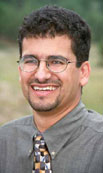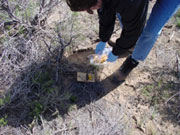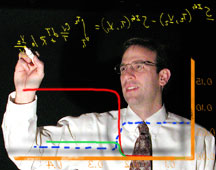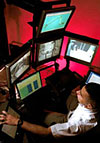| Research
|
|
|||||||||||||||||||||||||||
|
Another eye on the sky The largest and most comprehensive DOE-funded climate data collection project ever undertaken recently dedicated a new facility in Darwin, Northern Territory, Australia, adding a third such facility in the Tropical Western Pacific (TWP) region of Doe's Atmospheric Radiation Measurement (ARM) program. Tropical Western Pacific region operations are managed by Doe's Los Alamos National Laboratory and are part of the ARM triad that includes instrument sites on the Southern Great Plains and the North Slope of Alaska. Pacific Northwest National Laboratory in Richland, Washington manages the ARM program for DOE. Los Alamos and the Australian Bureau of Meteorology will jointly operate the Darwin facility as an Atmospheric Radiation and Cloud Station (ARCS). The other ARCS facilities in the TWP region are located on the tropical islands of Manus and Nauru just north and northeast of Papua New Guinea, near the equator. The first of those stations, on Manus, began taking data in 1996. ARCS facilities are designed to gather the standard types of weather data such as temperature, humidity, wind speed, etc. They also measure naturally-occurring solar and ground radiation, ground heat and cloud reflectivity. The Darwin site houses a number of instruments, including cloud radar, a micropulse LIDAR, a ceilometer, a Total Sky Imager and a Whole Sky Imager. The primary goal of ARM is to collect, over a lengthy period of time, a comprehensive database of weather and cloud information and make it available to scientists. The idea is to develop a climate change model and use that tool to improve our understanding of how climate change happens, and possibly our ability to predict how and when climate change will occur. The Darwin, Manus and Nauru ARCS are located in an area of the western Pacific that experiences a wide variety of weather. The region typically sees yearly weather extremes from dry continental conditions to an active monsoon season, and those conditions— along with all the standard transitional weather in between that give rise to plenty of "convective cloudiness"—make the region a rich environment for gathering an elaborate set of weather data. The addition of the Darwin site brings with it an important collaborative effort between the ARM program, the Australian Bureau of Meteorology and the Commonwealth Scientific and Industrial Research Organization. The additional collaborative agreements with the Papua New Guinea National Weather Service, the Nauru Department of Industry and Economic Development and the Australian Special Services Unit make Darwin a truly international scientific endeavor. The Tropical Western Pacific region management has the additional responsibility of dealing with foreign governments and their agencies and so is actively involved in diplomacy and educational issues in the countries of Papua New Guinea and The Republic of Nauru. The regional management has developed and implemented educational workshops to help children in those countries learn about the global implications of climate change and the impact of weather on the Earth and its inhabitants. Submitted by Doe's Los Alamos National Laboratory |




